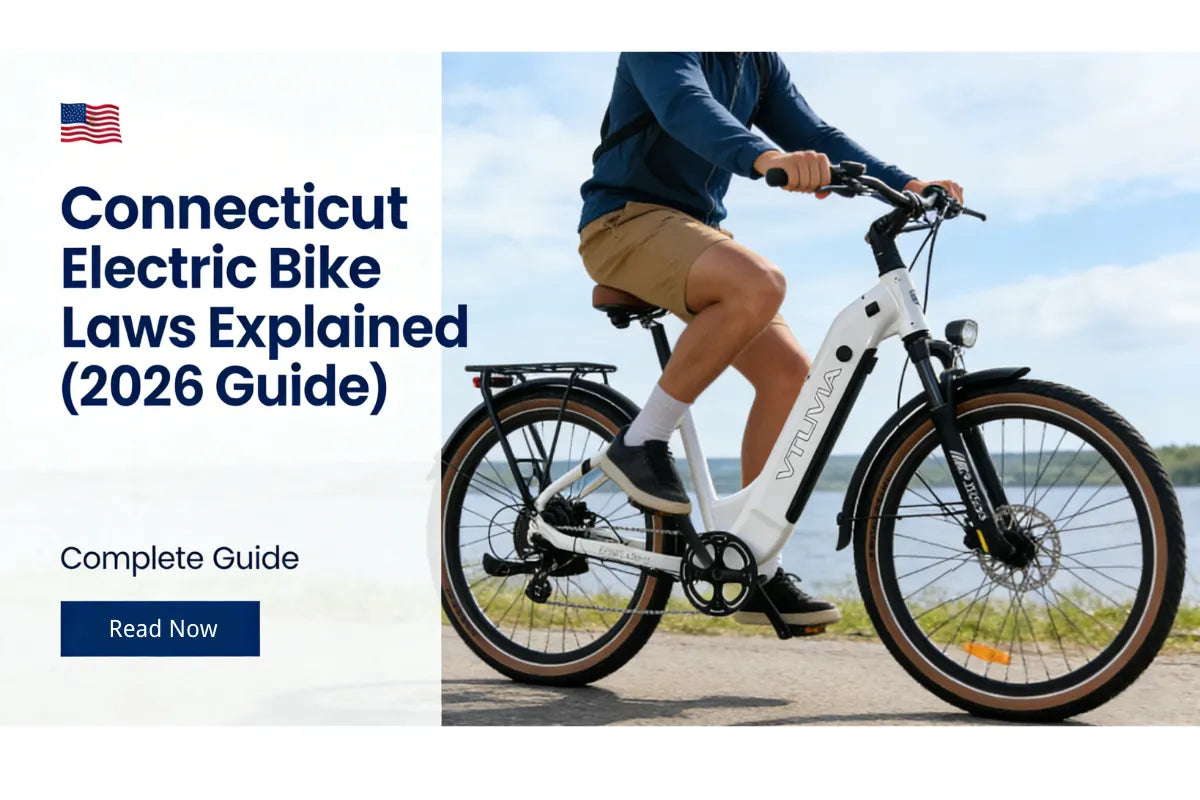How to Replace an eBike Tire: A Comfortable, Step-by-Step Guide
A clear, rider-friendly walkthrough that emphasizes a smooth, comfortable process at every stage. No brand names — just practical steps designed to keep you riding comfortably.
Quick Overview
- Front wheel removal is straightforward; rear wheels often need extra care for motor wires and the drivetrain.
- Focus on comfort during the process: reduce strain, protect components, and keep the bike stable.
- Follow the detailed checklist and step-by-step sections below for a reliable, comfortable repair.
Tools & Kit (Prepare Comfortably)
Lay everything out before you start — an organized workspace makes the job faster and reduces physical effort.
- Essential: 2–3 tire levers, spare inner tube (matching size), pump with gauge, adjustable wrench or axle tool.
- Useful: hex keys (4/5 mm), side cutters for zip ties, nitrile gloves, small rag, and a bike stand (or soft padding if flipping the bike).
- Comfort tip: Use a padded mat or towel to kneel on — keeping your posture comfortable makes the whole process feel easier.
Preparation & Safety (Start Smoothly)
- Power down and remove the battery when possible. This reduces weight and eliminates accidental power-on — a calmer, safer working environment.
- Protect controls and display if you flip the bike. Use soft padding under the handlebars and saddle to avoid scratches and pressure points.
- Wear gloves to keep hands clean and avoid cuts from rotors or sharp debris.
- Create good lighting and clear space; reaching and fumbling increase strain and errors.
Removing the Front Wheel — Gentle & Quick
This is the simpler of the two. Taking care here ensures a comfortable reassembly later.
- Stabilize the bike: Use a stand or flip it onto a soft surface. Comfort tip: keep the bike low so you don’t have to kneel deeply.
- Release brakes (if needed): Some setups require pad retraction to free the rotor — do this gently to avoid stress on the caliper.
- Open quick release or loosen axle nuts: Support the wheel with one hand and loosen with the other to avoid sudden drops.
- Slide the wheel out carefully: Remove spacers or retainers in order and rest them together — keeping parts organized lowers mental load while reassembling.
Removing the Rear Wheel — Detailed & Considerate
Rear wheel removal requires patience and a calm approach. Follow each step slowly to protect wiring and drivetrain components.
- Shift to smallest cog: This relaxes chain tension and makes wheel removal smoother — less force, more comfort.
- Remove or power down the battery: Lighter bike, less awkward handling.
- Cut zip ties securing motor cable: Trim carefully and keep the cable safe. Comfort note: using a small tray to hold screws and cut ties keeps things tidy and reduces reaching.
- Unplug the motor connector: Align the arrows, pull straight, and avoid twisting — this reduces strain and prevents connector damage.
- Loosen axle nuts and note washer order: Lay components in sequence on a clean towel to make later reassembly effortless.
- Pull derailleur back gently: Support it so you don’t tug cables. A calm approach protects parts and makes the task easier on your hands.
- Remove the wheel: Slide the wheel down and away, guiding the chain off the cassette. Rest the wheel on a soft surface so it remains scratch-free and comfortable to handle.
Inspect Tire & Rim — Small Checks, Big Comfort
Before replacing the tube, inspect carefully — removing embedded debris now prevents future flats and keeps rides comfortable.
- Run your fingers (gloved) along the inside of the tire to feel for glass, thorns, or sharp objects.
- Check the rim strip for damage to protect the tube from cuts.
- If you find sharp objects, remove them and wipe the area so the new tube isn't irritated later.
Remove Tire & Tube — Careful Handling
- Deflate fully: Press the valve to remove remaining air; ease of removal reduces fidgeting.
- Prise one bead over the rim: Work opposite the valve and move slowly — using two levers in quick, comfortable motions reduces strain.
- Remove the tube: Start at the valve and pull the tube out gently; store it for inspection if you intend to patch it later.
- Inspect tire interior: Roll the tire inside out if necessary to double‑check for embedded items.
Install New Tube — Smooth & Secure
A few small steps here make the rest of the ride noticeably more comfortable.
- Partially inflate the new tube: Add just enough air so it holds shape; this makes positioning easier and prevents twists.
- Insert valve through rim hole: Seat the valve straight to avoid kinks which cause slow leaks and discomfort later.
- Tuck the rest of the tube inside the tire: Ensure it sits evenly—no pinches.
- Seat the bead by hand: Use even pressure around the rim; avoid levers on the final section where practical.
- Inflate in stages: Stop at intervals (e.g., every 10–15 PSI) to check bead seating and feel for any bulges that indicate pinching.
Reinstall Wheel & Reconnect Motor — Comfortable Finish
- Align wheel in dropouts: For rear wheels, guide the chain onto the smallest cog and seat the axle evenly.
- Replace washers and spacers in order: This prevents awkward adjustments later and ensures a smooth ride feel.
- Hand‑tighten axle nuts, then secure fully: Tighten gradually and evenly to avoid skewed alignment that causes brake rub or wobble.
- Reconnect motor connector: Align arrows and push until it clicks—test power before securing with new zip ties.
- Reinstall caliper if removed: Tighten to spec and spin the wheel to check for free movement and comfortable braking response.
Final Tests & Comfort Check
- Inflate to recommended PSI (on the sidewall). Comfort tip: slightly higher PSI helps heavier loads, slightly lower improves cushion on rough roads.
- Spin the wheel to check for lateral wobble; minor issues are tolerable, but strong wobble requires truing.
- Take a short, slow test ride and pay attention to vibrations, ride softness, and braking response — adjust as needed for the most comfortable feel.





Share:
Benefits of eBikes for Retirees: How Often Should Seniors Ride?
How to Replace eBike Brakes: Complete Step-by-Step Guide